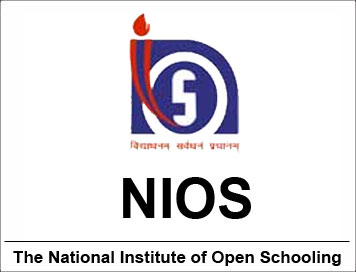
(Download) NIOS Practical Papers Of Chemistry Senior Secondary
Curriculum For Practical work In Chemistry
Objectives of the present course in practical work are as follows:
1. To develop and inculcate laboratory skills and techniques
2. To enable the student to understand the basic chemical concepts.
3. To develop basic competence of analysing and synthesising chemical compounds
and mixtures.
To meet these objectives three different types of laboratory experiments
are provided in the present practical course.\
1. Experiment for developing laboratory skills/techniques
2. Concept based experiments
3. Traditional experiements (for analysing and synthesing chemicals)
List of Practicals
1. (i) General safety measures with special reference to safe handling
of chemicals.
(ii) Aquaintance with chemistry laboratory and basic laboratory techniques
(cutting, bending and boring of glass tubes, sealing of apparatus, filtration,
distillation, crystallisation, preparation calibration, cleaning of glass
apparatus and use of burner etc.)
(iii) Measurement of volume, length, mass and density and common erros
therein.
2. Preparation, collection and study of some important physical and
chemical properties of at least three gases, one each from the following groups.
(a) Hydrogen and oxygen
(b) Carbon dioxide and hydrogen sulphide
(d) Chlorine, hydrogen chloride, and sulphur dioxide
3. Preparation of dilute solutions of known concentration of sulphuric
acid, hydrochloric acid and nitric acid. (Dilution should be carried out
strictly under the supervision of a teacher).
4. Study of interaction of metals (any four) with salt solution and
arranging them according to their activity (to form activity series). Metals and
salts may be selected from the following
Mg, Zn, Fe, Sn, Pb, Cu and Al and their salts. (Checking the order of metals
in series based on the electrode potential will be desirable).
5. (a) Determination of pH of following substances by using a
universal indicator solution or pH papers.
(i) Salt solution
(ii) Acids and bases of different dilutions
(iii) Vegetable and fuit juices
(b) Study of pH change by common-ion effect in case of weak acids and weak
bases by above method (specific examples of CH3COOH and CH3COONa and NH4OH and
NH4Cl may be taken).
6. Determination of melting point of a solid substance of low melting
point (below 100°C) by glass capillary tube method (Paraffin oil may be used as
bath).
7. Study of solubility of solid substances in water at different
temperatures and plotting of a solubility curve.
8. Study of the shift in equilibirum between ferric ions and thiocyanate
ions by increasing/decreasing the concentration of their ions.
9. Study of:
(a) the effect of concentration on the rate of reaction between sodium
thio-sulphate and hydrochloric acid.
(b) the effect of temperature on the rate of reaction between sodium
thiosulphate and hydrochloric acid.
10. Separation of coloured substances by paper chromatograpahy, and
comparison of their Rf values.
(a) a mixture of red and blue ink or a black ink.
(b) juice of a flower or grass.